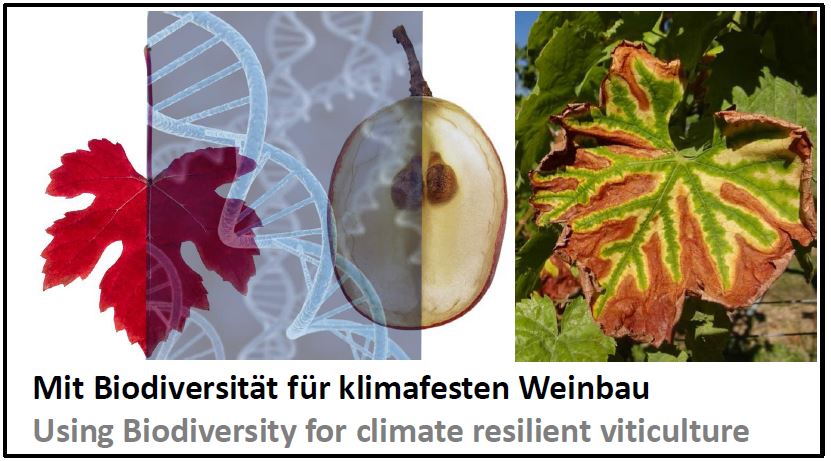2021_01 Wild Grapes Against Climate Change
|
What was the topic behind this work? The hot and dry summers cause also in our region to break down grapes in the blossom of their productivity. The cause are wood colonising fungi that are also found in healthy grapes and act there as harmless commensalists. When their host is posed under stress, they suddenly change their behaviour and begin to produce toxins, zu kill their host and extract energy from its corpse to make sex, form fruiting bodies, break out from the wood and spread their spores. ("The rats leave the sinking ship") We wondered, whether we can find grapes that can cope better with this challenge. How did we approach the question? The key for our research was the Wild Grape Collection established in the Botanical Garden of the KIT. This collection is unique worldwide, because it assembles the entire genetic diversity of the rare European Wild Grapevin (the ancestor of our domesticated Grapevine). In fact, several of these grapes can ward off the attack of wood decaying fungi. Using a connection of molecular, histocheical and Cryo SEM methods we investigated, how their defence works. What did we get? We could show that fungus and plant run a chemical arm race. The formation of wood and the formation of defence compounds, so called stilbenes, compete for the same entry molecules. The fungus tries to manipulate the grape by chemical signals to make it accumulate as much wood as possible (which is the food for the fungus). The plant, instead, tries to boost the formation of stilbenes. The wild grapes are more powerful in this arm race and channel their metabolism in a way that the potent viniferin trimers are formed that can stop fungal growth. Our knowledge can now help to render grapes, but also city trees, against the consequences of climate change. Our work was published in the high-ranking journal New Phytologist. Publication. 160. Khattab IM, Sahi VP, Baltenweck R, Grondard AM, Hugueney P, Bieler E, Dürrenberger M, Riemann M, Nick P (2021) Ancestral chemotypes of cultivated grapevine with resistance to Botryosphaeriaceae related Dieback allocate metabolism towards bioactive stilbenes. New Phytologist 229, 1133-1146. pdf |

